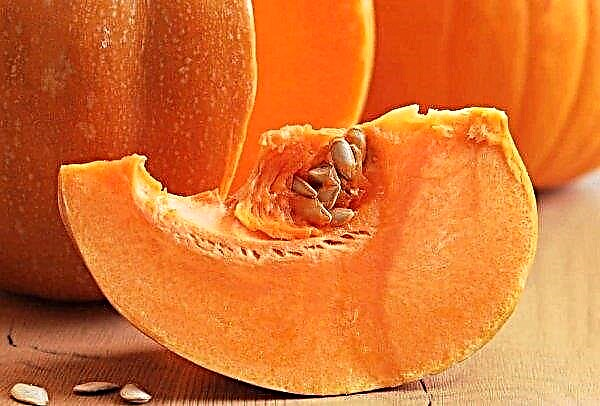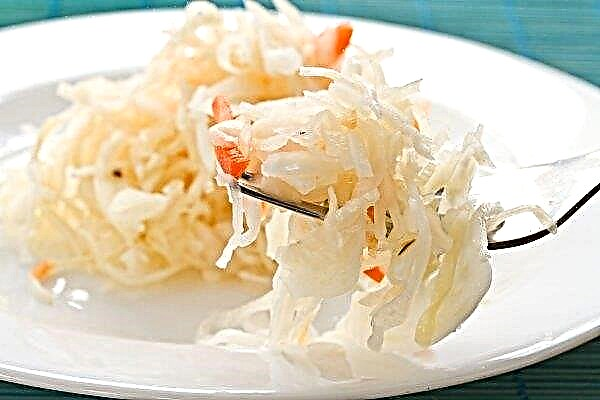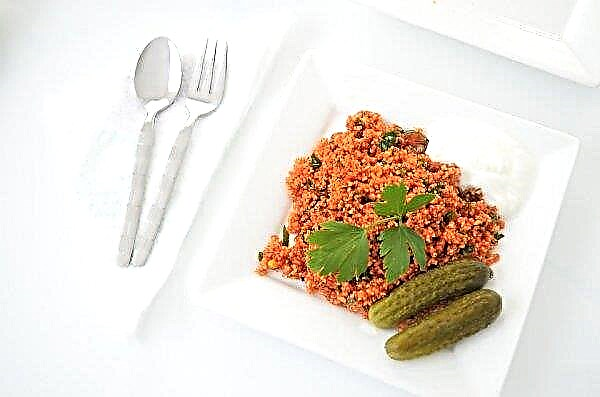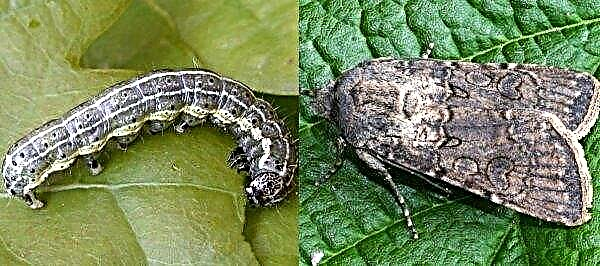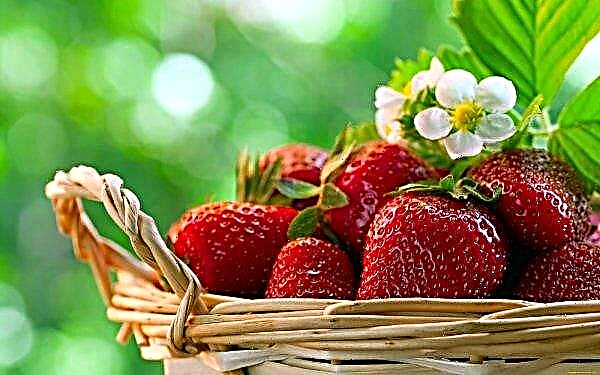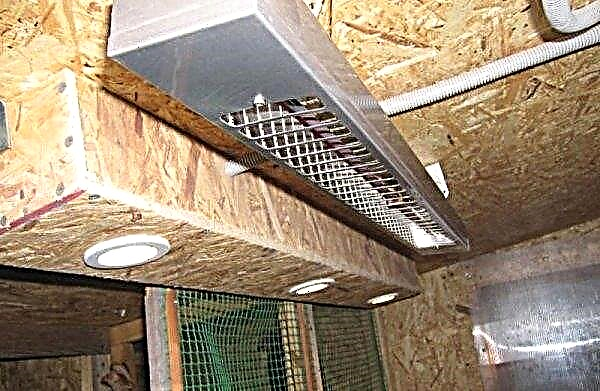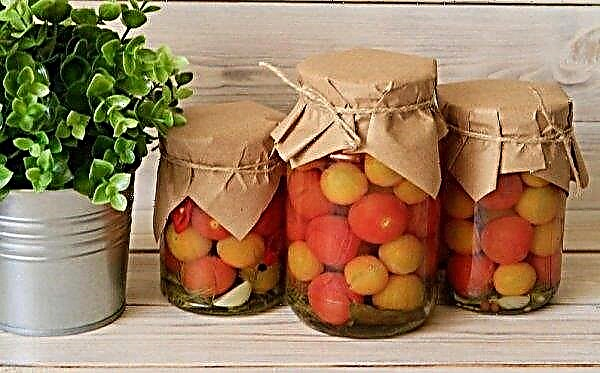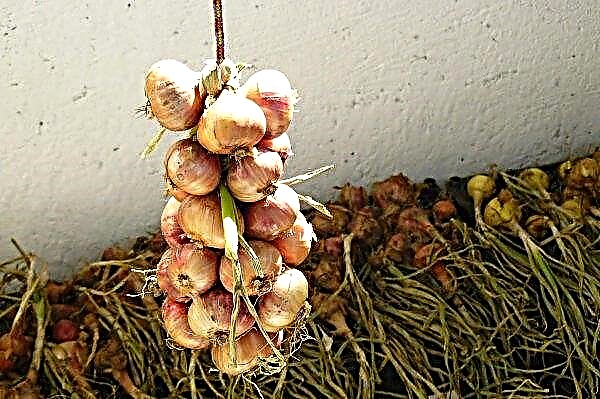Thuja is a popular plant, which, due to the simplicity of cultivation and unpretentiousness to environmental conditions, can be found in large botanical gardens and small garden plots. The article considers the botanical description of thuja species, distribution in nature and features of use in landscape design.
The definition of "thuja"
According to the explanatory dictionary, thuja is a genus of coniferous plants that belong to the Cypress family. The word "thuja" is borrowed from the Latin Thuja and introduced into the vocabulary in the XIX century. In ancient Greek, “thuja” means “incense”, as in Greece and ancient Rome, the wood was used by the local population on major holidays to light thanksfires to worship the gods.
Did you know? In Canada, thuja is very much appreciated and used for making tea; earlier, tea from pine needles helped local residents protect themselves from scurvy, the peak of the epidemic of which fell in the 16th century.
In North America, the plant is called the "vital tree", because it is famous for its healing properties, and local residents used to use needles to treat various diseases. In Siberia, they call it the "northern cypress", because in appearance it is very similar to southern cypress.
Botanical description of the plant
Thuja is represented by evergreen shrubs, in rare cases - very large trees, up to 70 m high, with a crown diameter of 2.5 to 6 m. The shrub is characterized by short, open or protruding skeletal branches of gray color, with many small shoots forming a narrow crown. Young red-brown shoots are flattened, have small and very soft needle-like leaves, the needles of an adult specimen acquire a scaly structure and fall over time.
Refers to monoecious plants. Flower buds are laid a year before the estimated flowering time. For pollination to be successful, the tree is able to produce a huge amount of yellow pollen.
Important! The appearance of thuja needles can determine the state of health of the plant. If the needles are juicy, dense, have a uniform characteristic color, then the tree is healthy. The patient specimen has dryness, lethargy of needles, yellowish or brownish color.
Closer to autumn, fruits are formed at the ends of the branches - small oval cones up to 15 mm in diameter, which have 4 or 6 pairs of opposite scales, thickened at the edges and elongated in the upper part. Under each scale there are 2-3 flat seeds with a pair of wings. The root system of the thuja is compact, fibrous, located horizontally to the surface of the earth, lies no more than 1 m in depth.
Where it grows in nature
Depending on the type of thuja, habitats in the wild are located on different continents:
- western - grows in the eastern part of Server America, in the territory of the Atlantic states of the USA. It prefers calcareous soils and marshy areas, on which it forms high impenetrable thickets, also found on the rocky slopes of mountain rivers;
- folded - grows in lowlands on the moist soil of the coastlines of lakes or mountain rivers. A wildlife habitat is located in western Washington, Oregon, California, extending to the northern mountains of Northern Montana;
- Chinese - grows in the mountainous part in the north of China, at an altitude of up to 1350 m above sea level, prefers rocky areas with poor soil;
- japanese - grows in Japan, prefers mountainous areas, found on the islands of Honshu and Shikoku;
- korean - widespread in the wild in Korea, forms low thickets on the middle and upper slopes of the mountains at an altitude of 750-2000 m.
Video: varieties of thuja
Types of Thuja
There are many types of arborvitae, but the most common for home growing are the following:
- western - It is called "northern white cedar" and "eastern white cedar." It grows very slowly, does not exceed 20 m in height, has a compact pyramidal or ovoid crown. The trunk and shoots are covered with smooth, red-brown or gray-brown bark. The needles have a scaly structure, in the summer a saturated green color, by winter they acquire a brown or brown hue. The wood of the western thuja is very appreciated, due to its resistance to decay and the absence of resin passages;
- Chinese - They also call it a plane-branch, represented by a small tree, which grows very slowly and does not exceed a height of 10 m, under adverse environmental conditions takes the form of a bush. The color of the bark of the trunk is red-brown, the branches have a yellowish-red hue and form a crown in the form of a cone. The needles in the form of scales, light green in winter, acquire a brown hue;
- korean - grows in the form of a tree or shrub, up to 10 m high, the trunk, covered with red-brown bark, has a thickness of up to 80 cm. The branches are flat, in the upper part they are covered with light green needles, which becomes silver to the bottom;
- japanese - It is found under the name thuja Stendisha, grows in the form of a tree whose height does not exceed 35 m, has a wide pyramidal crown. The shoots are covered with red-brown bark, the needles are dull green, flat;
- folded - a tree reaching 75 m in height, has a trunk diameter of 120 to 240 cm, the crown is pyramidal or conical with horizontally located drooping branches. The shoots are covered with glossy green needles, which are covered with whitish stripes to the bottom of the crown.
Use in landscape design
One of the most common questions among landscape composition customers is “how long does a thuja live”, since it is often unprofitable to buy such expensive plants. It’s not worth worrying about this, as the plants have been living for more than 200 years, and with proper care more than one generation will be able to admire the created garden. It is thuja that is chosen as one of the best evergreens in landscape design.
Depending on the type of thuja, various compositions are created on the site:
- The pyramidal type is planted mainly singly, but the formation of a small group of plants is also possible.
- Colon-shaped forms grow small, so they will best look like a hedge.
- The pin-shaped variety is also used to create hedges or various shapes, given that plants differ in dense branches.
- Umbrella-shaped thujas decorate flowerbeds or adjoining territories.
- Spherical specimens, which differ in the density and density of the branches, are used to create compositions in a group with other plants.
Thuja is very popular in landscape design, not only due to external characteristics, but also due to its high resistance to growing conditions in cities. Also, the plants have good frost resistance and do not freeze with sufficient snow cover in conditions of severe frost. Both bushes and trees are excellent material for topiary art, so designers can create various beautiful figures by decorating them with territory.
Diseases and Pests
Almost all thuja pests belong to oligophages, therefore, they can be found on other species of cypress plants, especially if they grow close.
Three ecological groups of thuja pests can be distinguished:Did you know? Thuja needles are used to make essential oil, which helps relieve stress and helps to overcome insomnia.
- sucking;
- miners;
- xylophages.
Video: sucking pests in the garden
Sucking include pests that feed on plant juices, which cause serious harm to the ground part of the thuja.
The most common pests in this group are:
- Shield - elongated oval insect, up to 2 mm in size, brown. It affects cones, berries and needles, becomes a cause of growth retardation of young plants and a change in the color of needles to brown. An effective method of control is considered to be systemic treatment with insecticides, such as Actara, Confidor, Calypso, according to the instructions for the preparations. To obtain the maximum effect, it is recommended to alternate treatment with different means 2 weeks after the previous spraying.
- Aphid - has a pear-shaped body 3 mm in length, grayish-brown in color, with a slight waxy coating. It affects the branches, trunk and needles, and causes the drying of parts of the bush. For the fight, “Confidor”, “Calypso”, “Mospilan” preparations are used, according to the instructions.

Mineral insects include pests, the larvae of which eat needles, making moves in the thickness of a growing shoot. They can live on the plant both during the development period and after its death. The most common moth on the thuja is a moth - a butterfly, whose wingspan is about 11 mm, brown in color with a bronze tint.
Important! With a severe defeat by stem pests, it is most likely not possible to save the plant, therefore it is better to remove it from the territory and burn it to protect the remaining conifers.
The caterpillars of the moth are represented by a light brown body with three reddish stripes and a shiny head. Propagate in the middle of the crown, weave huge spider web nests, affecting most of the plant. Become the cause of a decrease in the number of needles on the shoots, a painful type of tree. Stem pests (xylophages) include insects that eat bark, twig wood, and leafy parts. Often hit weakened, old and drying out specimens.
 As an effective means for the destruction of mining moths and larvae, pesticides "Angio", "Confidor" are used according to the instructions.
As an effective means for the destruction of mining moths and larvae, pesticides "Angio", "Confidor" are used according to the instructions.
Among the common xylophig that settle on thuja, there are:
- Tuevaya beetle - the beetle is dark brown in size, ranging from 1.2 to 9 mm. It makes moves in the bark of the tree, leaving large holes, which in the future become the cause of the development of fungi and bacteria. For treatment and prevention, Bordeaux is used according to the instructions.
- Juniper hive beetle - black beetle with a brown shiny sheen, up to 4 mm in length. It affects not only the bark, but also the wood of the plant, if the treatment is not started in time, the tree may die. For the fight use drugs "Actellik", "Decis" according to the instructions.

In addition to pests, thuja can be exposed to various diseases, the main of which are:
- Cabatin necrosis - a fungal disease that affects young shoots and needles, as a result of which it acquires a reddish-brown color. With a severe defeat, the plant bark also suffers, twisted black-brown rounded tubercles appear. For treatment, Topaz or Fitosporin-M is used according to the instructions.
- Brown shyutte - a disease of fungal nature, which affects only the lower part of the needles. The development of the fungus occurs in the winter, and the needles hanging to the soil are most susceptible to infection. The fungus damages the needles; it dries and falls. To stop the harmful effects of the disease, copper sulfate and bordeaux are used according to the instructions.
- Fusarium - the causative agent of which is a fungus, is able to affect not only the terrestrial part of the plant, but also the roots, leading to a lack of nutrition and further death of thuja. For treatment use drugs such as Fundazol, Skor, Chorus, according to the instructions.
- Alternariosis - a fungal disease that causes a change in the color of the needles to brown, a black coating appears. Sick branches are recommended to be removed, and healthy ones should be treated with Fundazolum or Skor according to the instructions.
Video: thuja diseases and their treatment
Depending on the type of arborvitae, it can be used in landscape design of various sites to create unique compositions. To thuja always looked spectacular, it is recommended to timely combat diseases and pests that appeared on the territory.


